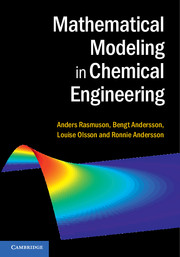Book contents
- Frontmatter
- Contents
- Preface
- 1 Introduction
- 2 Classification
- 3 Model formulation
- 4 Empirical model building
- 5 Strategies for simplifying mathematical models
- 6 Numerical methods
- 7 Statistical analysis of mathematical models
- Appendix A Microscopic transport equations
- Appendix B Dimensionless variables
- Appendix C Student’s t-distribution
- Bibliography
- Index
2 - Classification
Published online by Cambridge University Press: 05 June 2014
- Frontmatter
- Contents
- Preface
- 1 Introduction
- 2 Classification
- 3 Model formulation
- 4 Empirical model building
- 5 Strategies for simplifying mathematical models
- 6 Numerical methods
- 7 Statistical analysis of mathematical models
- Appendix A Microscopic transport equations
- Appendix B Dimensionless variables
- Appendix C Student’s t-distribution
- Bibliography
- Index
Summary
In this chapter mathematical models are classified by
grouping into opposite pairs;
mathematical complexity;
degree of resolution.
The intention is to give the reader an understanding of differences between models as reflected by the modeling goal. Which question is the model intended to answer?
Grouping of models into opposite pairs
In this section, we will examine various types of mathematical models. There are many possible ways of classification. One possibility is to group the models into opposite pairs:
linear versus non-linear;
steady state versus non-steady state;
lumped parameter versus distributed parameter;
continuous versus discrete variables;
deterministic versus stochastic;
interpolation versus extrapolation;
mechanistic versus empirical;
coupled versus not coupled.
Linear versus non-linear
Linear models exhibit the important property of superposition; non-linear ones do not. Equations (and thus models) are linear if the dependent variables or their derivatives appear only to the first power; otherwise they are non-linear. In practice, the ability to use a linear model for a process is of great significance. General analytical methods for equation solving are all based on linearity. Only special classes of non-linear models can be attacked with mathematical methods. For the general case, where a numerical method is required, the amount of computation is also much less for linear models, and in addition error estimates and convergence criteria are usually derived under linear assumptions.
- Type
- Chapter
- Information
- Mathematical Modeling in Chemical Engineering , pp. 10 - 19Publisher: Cambridge University PressPrint publication year: 2014



